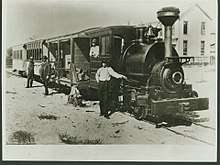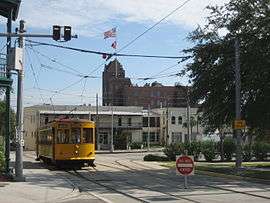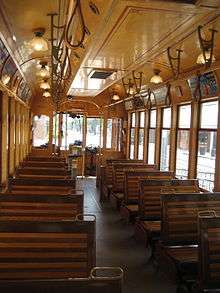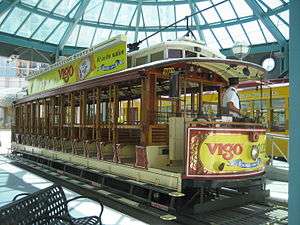TECO Line Streetcar System
| TECO Line Streetcar System | |||||||||||||||||||||||||||||||||||||||||||||||||||||||||||||||||||||||||||||||||||||||||||||||||||||||||||||||||||||||||||||||||||||||||||||||||||||||||
|---|---|---|---|---|---|---|---|---|---|---|---|---|---|---|---|---|---|---|---|---|---|---|---|---|---|---|---|---|---|---|---|---|---|---|---|---|---|---|---|---|---|---|---|---|---|---|---|---|---|---|---|---|---|---|---|---|---|---|---|---|---|---|---|---|---|---|---|---|---|---|---|---|---|---|---|---|---|---|---|---|---|---|---|---|---|---|---|---|---|---|---|---|---|---|---|---|---|---|---|---|---|---|---|---|---|---|---|---|---|---|---|---|---|---|---|---|---|---|---|---|---|---|---|---|---|---|---|---|---|---|---|---|---|---|---|---|---|---|---|---|---|---|---|---|---|---|---|---|---|---|---|---|---|
 | |||||||||||||||||||||||||||||||||||||||||||||||||||||||||||||||||||||||||||||||||||||||||||||||||||||||||||||||||||||||||||||||||||||||||||||||||||||||||
|
A TECO streetcar picking up passengers in Ybor City | |||||||||||||||||||||||||||||||||||||||||||||||||||||||||||||||||||||||||||||||||||||||||||||||||||||||||||||||||||||||||||||||||||||||||||||||||||||||||
| Overview | |||||||||||||||||||||||||||||||||||||||||||||||||||||||||||||||||||||||||||||||||||||||||||||||||||||||||||||||||||||||||||||||||||||||||||||||||||||||||
| Type | Heritage streetcar | ||||||||||||||||||||||||||||||||||||||||||||||||||||||||||||||||||||||||||||||||||||||||||||||||||||||||||||||||||||||||||||||||||||||||||||||||||||||||
| System | HART | ||||||||||||||||||||||||||||||||||||||||||||||||||||||||||||||||||||||||||||||||||||||||||||||||||||||||||||||||||||||||||||||||||||||||||||||||||||||||
| Status | Operational | ||||||||||||||||||||||||||||||||||||||||||||||||||||||||||||||||||||||||||||||||||||||||||||||||||||||||||||||||||||||||||||||||||||||||||||||||||||||||
| Locale | Tampa, Florida | ||||||||||||||||||||||||||||||||||||||||||||||||||||||||||||||||||||||||||||||||||||||||||||||||||||||||||||||||||||||||||||||||||||||||||||||||||||||||
| Termini |
Whiting Station Centennial Park Station | ||||||||||||||||||||||||||||||||||||||||||||||||||||||||||||||||||||||||||||||||||||||||||||||||||||||||||||||||||||||||||||||||||||||||||||||||||||||||
| Stations | 11[1] | ||||||||||||||||||||||||||||||||||||||||||||||||||||||||||||||||||||||||||||||||||||||||||||||||||||||||||||||||||||||||||||||||||||||||||||||||||||||||
| Services | 1[1] | ||||||||||||||||||||||||||||||||||||||||||||||||||||||||||||||||||||||||||||||||||||||||||||||||||||||||||||||||||||||||||||||||||||||||||||||||||||||||
| Daily ridership | 783[2] | ||||||||||||||||||||||||||||||||||||||||||||||||||||||||||||||||||||||||||||||||||||||||||||||||||||||||||||||||||||||||||||||||||||||||||||||||||||||||
| Website | TECO Line Streetcar System | ||||||||||||||||||||||||||||||||||||||||||||||||||||||||||||||||||||||||||||||||||||||||||||||||||||||||||||||||||||||||||||||||||||||||||||||||||||||||
| Operation | |||||||||||||||||||||||||||||||||||||||||||||||||||||||||||||||||||||||||||||||||||||||||||||||||||||||||||||||||||||||||||||||||||||||||||||||||||||||||
| Opened | October 19, 2002 | ||||||||||||||||||||||||||||||||||||||||||||||||||||||||||||||||||||||||||||||||||||||||||||||||||||||||||||||||||||||||||||||||||||||||||||||||||||||||
| Owner | City of Tampa | ||||||||||||||||||||||||||||||||||||||||||||||||||||||||||||||||||||||||||||||||||||||||||||||||||||||||||||||||||||||||||||||||||||||||||||||||||||||||
| Operator(s) | HART | ||||||||||||||||||||||||||||||||||||||||||||||||||||||||||||||||||||||||||||||||||||||||||||||||||||||||||||||||||||||||||||||||||||||||||||||||||||||||
| Character | At-grade | ||||||||||||||||||||||||||||||||||||||||||||||||||||||||||||||||||||||||||||||||||||||||||||||||||||||||||||||||||||||||||||||||||||||||||||||||||||||||
| Rolling stock | Birney | ||||||||||||||||||||||||||||||||||||||||||||||||||||||||||||||||||||||||||||||||||||||||||||||||||||||||||||||||||||||||||||||||||||||||||||||||||||||||
| Technical | |||||||||||||||||||||||||||||||||||||||||||||||||||||||||||||||||||||||||||||||||||||||||||||||||||||||||||||||||||||||||||||||||||||||||||||||||||||||||
| Line length | 2.7 mi (4.35 km)[3] | ||||||||||||||||||||||||||||||||||||||||||||||||||||||||||||||||||||||||||||||||||||||||||||||||||||||||||||||||||||||||||||||||||||||||||||||||||||||||
| Track gauge | 4 ft 8 1⁄2 in (1,435 mm) | ||||||||||||||||||||||||||||||||||||||||||||||||||||||||||||||||||||||||||||||||||||||||||||||||||||||||||||||||||||||||||||||||||||||||||||||||||||||||
| Electrification | Overhead lines | ||||||||||||||||||||||||||||||||||||||||||||||||||||||||||||||||||||||||||||||||||||||||||||||||||||||||||||||||||||||||||||||||||||||||||||||||||||||||
| |||||||||||||||||||||||||||||||||||||||||||||||||||||||||||||||||||||||||||||||||||||||||||||||||||||||||||||||||||||||||||||||||||||||||||||||||||||||||
The TECO Line Streetcar System is a heritage streetcar transit line in Tampa, Florida, run by the Hillsborough Area Regional Transportation Authority, owned by the city of Tampa, and managed by Tampa Historic Streetcar, Inc. It connects Downtown and Channelside to the historic Ybor City district. There is also an "In-Town" trolley-replica bus system that connects Downtown, Channelside, and Harbour Island.[1]
The line opened on October 19, 2002, and is 2.7 mi (4.35 km) long[3] with 11 stations.[1] The system is single-track with several passing sidings, which mostly follows a reserved right-of-way at a cost of 13.7 million per mile. Ten replica historic streetcars and one restored historic streetcar are used on the line. The replica cars themselves cost $745,000 each.
First streetcars in Tampa

The first streetcars in Tampa were operated by the Tampa Street Railway Company between downtown Tampa and Ybor City. The line started operation in 1885, using wood-burning steam engines. In 1892 the Tampa Street Railway Company merged with the Florida Electric Company to form the Tampa Street Railway and Power Company, and converted to electrically powered streetcars in 1893. Also in 1892, a rival company, the Tampa Suburban Company, was organized to compete with the Tampa Street Railway Company, but was blocked from operating by an injunction. A new company, The Consumers Electric Light and Street Railway Company was formed, and soon out-competed the Tampa Railway Company by lowering its fares. The Consumers Electric Light and Street Railway Company bought out the Tampa Street Railway Company in 1894. The company also acquired control of the Tampa and Palmetto Beach Rail Company, becoming the sole streetcar operator in Tampa. The Tampa Electric Company acquired control of the Consumers Electric Light and Street Railway Company in 1899.[4][5]
The Tampa Electric Company acquired 21 miles (34 km) of streetcar track with the Consumers Electric Light and Street Railway Company in 1899. After acquiring the Tampa and Sulphur Springs Traction Company in 1913, Tampa Electric had almost 50 miles (80 km) of track, increasing to 53 miles (85 km) by 1926. That year the Tampa Electric system carried almost 24 million passengers.[6] The streetcar system in Tampa was shut down after World War Two, with the last cars removed from service some time between 1946 and 1949.[7]
Revival
Streetcars returned to Tampa in 2002, when the initial 2.4 mi (3.86 km) long[3] heritage line was opened. Its operating costs are financed through a special tax assessment (.33 per thousand) on businesses in the streetcar district and a streetcar endowment stemming from settlement money received in 2006 by the city for the demolition of the Harbor Island People Mover.
In its first year of operation, the streetcar carried 420,000 riders, 20% more than projected. In 2005, 434,498 passengers used the streetcar. In 2011, streetcar ridership from October 2011 through May decreased by 8.3 percent to 265,148 with a total for the year of 358,737 riders. In 2015, the streetcar served 285,900 passengers.[2]
A new 0.333 mi (0.54 km) extension,[3] costing $5.5 million, opened for revenue service on December 19, 2010. The extension runs north along Franklin Street to Whiting Street and the Fort Brooke parking garage,[3] connecting the Convention Center as well as the rest of the TECO Line to the downtown core.[8]
Station list
- Whiting (Connection to HART bus Routes 14 and 30; access to Fort Brooke parking garage. This is the southern terminus of the streetcar line.)
- Dick Greco Plaza (connection to In-Town Trolley Purple Line (weekday peak service) to various points in downtown Tampa, Harbour Island, & Channelside; signed as TRANSPORTATION PLAZA on rollsigns). This station was the former southern terminus of the streetcar line until the Whiting station opened in 2010.
- HSBC
- Amalie Arena (formerly The Tampa Tribune Station)
- Cumberland Avenue
- York Street
- Port Tampa Bay
- Cadrecha Plaza
- Streetcar Society
- Centro Ybor (formerly Tampa Bay Federal Credit Union)
- Centennial Park (This is the northern terminus of the streetcar line.)
Rolling stock
The system has eleven operating streetcars: nine modern replica double-truck Birney cars, one replica open-bench "Breezer" (similar to J.G. Brill cars built for Metropolitan Street Railway of New York), and one restored original Birney car. All except the original Birney were built by the Gomaco Trolley Company in Ida Grove, Iowa.
The replica Birney cars have a welded steel body with cosmetic rivets added to make them look older. The cars are wheelchair-accessible, air-conditioned and have automated stop announcements. The seats are made of wood and are reversible for when the car changes direction. The cars are also equipped with on-board ticket dispensers; however, they do not provide change.
The original Birney #163 streetcar ran on the Tampa & Ybor City Street Railway between 1923 and 1946. It was found in 1991 in Sulphur Springs, a neighborhood in Tampa, where it had been used as an apartment and later a storage shed. After extensive restoration the car is back to its former condition and is used for special events, such as Streetcar Fest in mid-October. It is Florida's only operational historic streetcar.[9]
Financing
The agency that operates the streetcar is a non-profit.[10] On October 22, 2014, the Tampa Bay Times published an editorial on the leverage a subsidy the Tampa Port Authority gives to the streetcar system. However it also wrote that the system "is not dependent" on the subsidy. They also reported that the system has to pay almost half a million dollars in insurance to cover the risk of streetcars crossing an active freight rail line.
The single-ride adult fare was $2.50 prior to October 2018.[11] Starting that month, fares were dropped for a three year period due to a grant from the Florida Department of Transportation.[12]
Gallery

Streetcar in Ybor City 
Wooden streetcar interior 
"Breezer" streetcar in downtown Tampa 
Streetcar ticket machine 
"Breezer" streetcar at Greco Plaza stop
See also
References
- 1 2 3 4 "Downtown Network Map - Downtown Network of Services" (PDF). Hillsborough Area Regional Transit (HART). 2012. Retrieved 2013-08-18.
- 1 2 "Transit Ridership Report Fourth Quarter 2015" (pdf). American Public Transportation Association. March 2, 2016. Retrieved September 20, 2016 – via http://www.apta.com/resources/statistics/Pages/ridershipreport.aspx.
- 1 2 3 4 5 "TECO Line Streetcar System – Streetcar System". TECOline Streetcar System. 2012. Retrieved 2013-08-18.
- ↑ "Tampa's Streetcar System". Tampa Heritage. Tampa Preservation, Inc. Retrieved 15 February 2018.
- ↑ "Tampa's Streetcar History". Soar Through History. Tampa Bay History Center. Retrieved 15 February 2018.
- ↑ "Streetcar history clatter and dings". TECO - Tampa Electric. Retrieved 15 February 2018.
- ↑ "The End of the Streetcar Era in Tampa". Ybor City. Retrieved 15 February 2018.
- ↑ "Streetcar system reaches more of downtown Tampa". Tampa Bay Business Journal. December 17, 2010. Retrieved 2011-01-24.
- ↑ Streetcar Vehicles - Birney Car
- ↑
"Editorial: Tampa trolley gets helpful push". Tampa Bay Times. October 22, 2014. Retrieved 2014-10-25.
The Tampa Port Authority's decision to withhold a subsidy from the downtown streetcar until the trolley system comes up with a stronger business plan could be a helpful turning point for this key public asset. The port should use this leverage, though, to make the trolley much more integral to the remaking of the Channel District.
- ↑ Streetcar Fares
- ↑ "Free streetcar rides in downtown Tampa for three years". FOX 13. 7 October 2018. Retrieved 8 October 2018.
External links
| Wikimedia Commons has media related to TECO Line Streetcar System. |